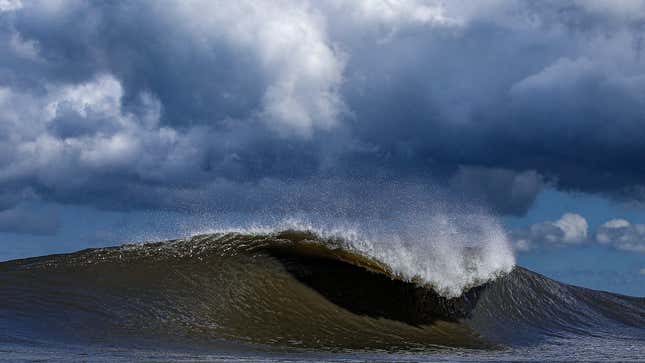
The oceans are facing a host of maladies, from acidification to sea level rise. Turning them into a ginormous liquid layer cake may sound comparatively benign (and delicious). But while Earther is decidedly pro-cake, this is in fact a bad situation.
New research published in Nature Climate Change on Monday shows that oceans are stratifying faster than previous research indicated. It’s due largely to rising temperatures, and the layer cake-ification of the oceans imperils carbon storage and could upend ecology around the world.
By now, it’s blindingly obvious that the planet is trapping more heat, thanks to a blanket of human-driven greenhouse gas emissions. But the ocean stratification impact is not one of the easily seen consequences, unlike *gestures wildly at the world right now.* To get a grasp on how climate change is splitting the ocean into layered slabs, scientists used a mix of modeling and data captured from networks of autonomous floats that rove the ocean loaded with sensors that record temperature, salinity, density, and other ocean variables.
The datasets allowed them to look at the period from 1960 to 2018. They found that parts of every ocean basin were seeing water become less dense up and down the water column, which is to be expected, since warmer water is less dense than colder water. But the changes weren’t uniform throughout the water column. Heat at the surface of the ocean takes longer to propagate to the depths, which means the upper layers of the ocean are getting hotter than the lower ones. That temperature-driven gradient is leading to greater stratification; according to the study, temperature changes made ocean stratification more extreme in more 90% of the areas they observed.
Salinity also plays a role, because freshwater is less dense than saltier water, which is a major issue in places near melting ice sheets, like the North Atlantic off the Greenland coast. Though data was more sparse in the Arctic, salinity and temperature changes observed there are leading to some of the most extreme stratification rates on the planet. But in some places, the ocean is getting saltier due to increased evaporation. The findings show that in the Atlantic, temperature-driven stratification is nearly 1.6 times higher than the overcall change because of increasing salinity, most notably in the tropical Atlantic.
The findings show that there has been a “substantial” increase of 5.3% in stratification globally over the time period they looked at it. The period in the new study is longer than the most recent Intergovernmental Panel on Climate Change report on the oceans released last September, and the rate of stratification is higher.
Last year’s IPCC report found stratification was one of the factors leading to lower productivity in the most important ocean ecosystems in the world for humans, such as California’s Humboldt Current. That’s because the layer of warm water on the top of the ocean acts as a cap, preventing nutrient-rich deep water from rising to the surface. Without it, the organisms at the base of the food chain decrease, and the impacts ripple through the ecosystem. Ocean dead zones are also tied to hotter ocean surfaces, which could further reinforce the decline in marine biodiversity.
More stratified oceans also take up less carbon dioxide, which is bad, since humans appear to be in no rush to stop emitting it. That could unleash a feedback loop where more human carbon pollution remains in the atmosphere, leading to hotter oceans (and, it should be noted, land where we live) and less carbon uptake.
So basically, we’re baking the most terrible kind of layer cake imaginable. As if we needed another reason to turn down the oven.